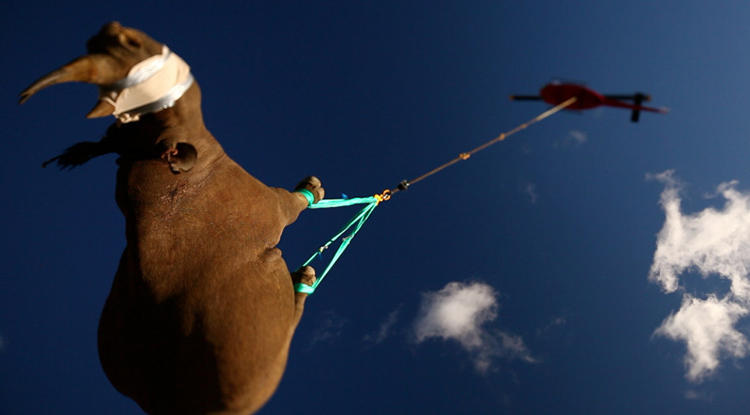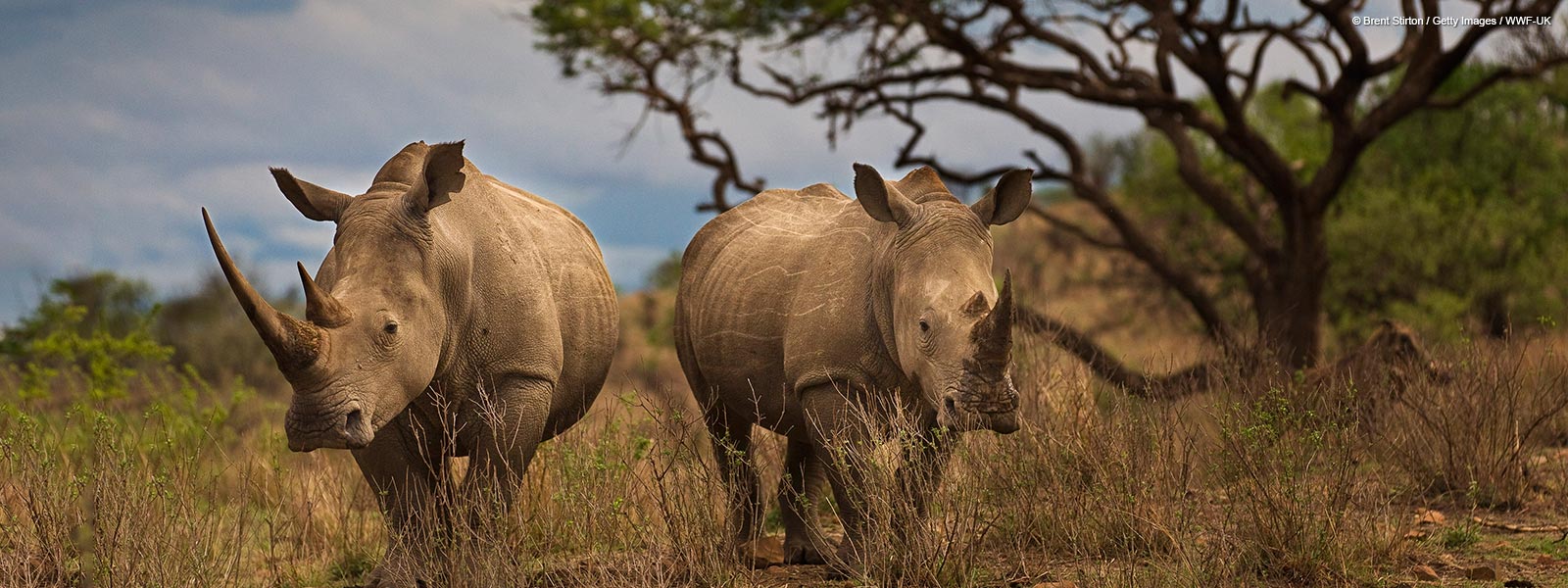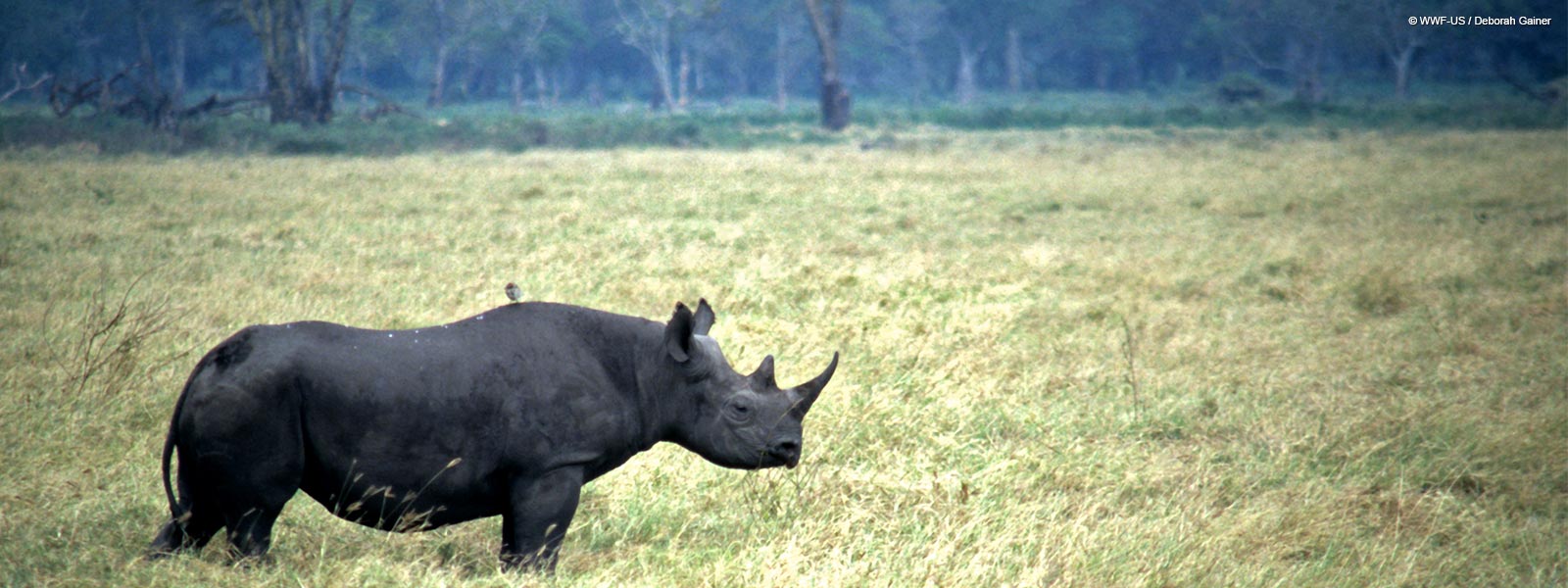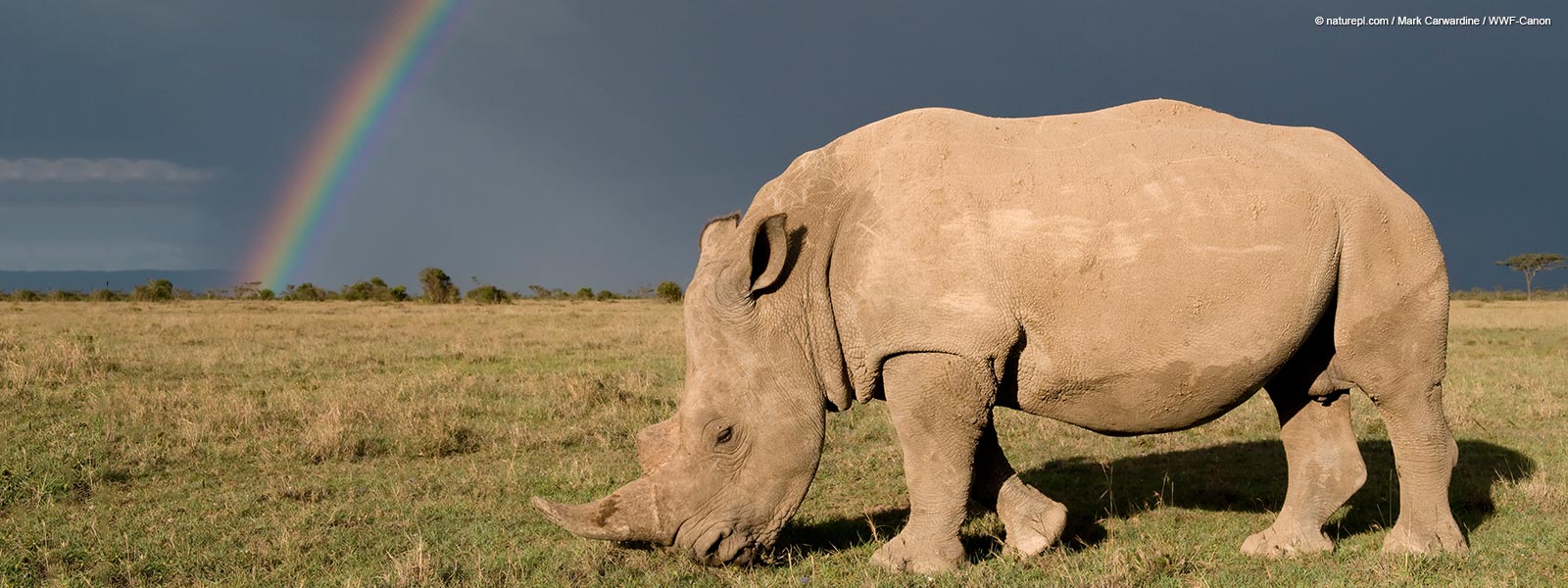In prehistoric times, rhinos lived even in Europe, as is indicated by surviving cave paintings. Today, however, very few rhinos survive outside national parks and reserves in Africa and Asia.
The Life of the Rhinoceros
Rhinos are herbivores. They rely mainly on their well-developed sense of smell and hearing. Their eyesight, however, is quite poor, and they have difficulty distinguishing from a distance whether another animal poses a threat. Because of this, they may attack as a precaution, giving the impression to be quite irritable. Fortunately for their enemies, they have trouble making targeted attacks.
Although their skin is thick, it is quite sensitive to sun and insect bites. They cover their bodies in mud, which serves as both sunblock and insect repellent, and wallow in puddles and sandy river beds to cool down.
Despite their weight—more than 1,000 kilograms for black rhinos and up to 4 tons for white rhinos—they are very fast. They can run faster than 50 kilometers per hour when they attack, which is faster than the 100-meter world champion!
Life under Threat
There are five species of rhinos in Africa and Asia. Some are already at the verge of extinction, like the Asian Javan rhino, who is struggling to survive with only 50 individuals left. Fortunately, other species are effectively conserved and their populations have recovered: in southern Africa, the white rhino, who was at the verge of extinction in the early 20th century, today has a total population of more than 20,000 individuals. The black rhino population has doubled during the last two decades and nowadays counts about 5,000 individuals. Nevertheless, its population today is small compared to 100,000 individuals at the beginning of the century.
Today, the greatest threat to rhinos is illegal wildlife trade and the enormous demand for its horn in countries like Vietnam. The price for a rhino horn in the black market goes up to 65,000 dollars per kilogram, making it more expensive than gold. The demand for rhino horn is fueled by superstitions that go so far as to claim that the horn can cure cancer, disregarding the fact that the horn is made of keratin, just like human hair and nails.
To make the most of this illicit profit, extensive new criminal networks have spread and operate in the protected areas of Africa. They use technologically advanced equipment, such as radars, to locate the rhinos, kill them and remove their horn, which is transported from the scene of the crime in Africa to the black market in Vietnam within 48 hours.
The life We Protect
In October 2011, aiming at creating a new black rhino population in a safer environment, we carried out a risky operation. Nineteen black rhinos were transported by helicopter, spending less than 10 minutes in the air. The sedated animals woke up directly in a new home that will improve their chances of breeding and increasing their number.

© WWF-Canon / Green Renaissance
As part of our global campaign against illegal wildlife trade, we organize and provide equipment for anti-poaching patrols in the protected areas. We also work with the governments of countries that serve as hubs for illegal trafficking, such as Mozambique and Vietnam, to halt the flow of illegal trade at the borders.
We use the latest technology to match the DNA of the horns to the rhinos killed. This data can later be used to establish the horns’ origin and presented as evidence in legal proceedings to dismantle illegal networks.
Almost all of the protected areas where rhinos live also host other valuable species of plants and animals. Rhino conservation therefore contributes to the survival of many other species. Moreover, rhinos attract tourists, who visit from all around the world to admire them in their natural environment, creating employment and growth opportunities for local communities.
Share this








